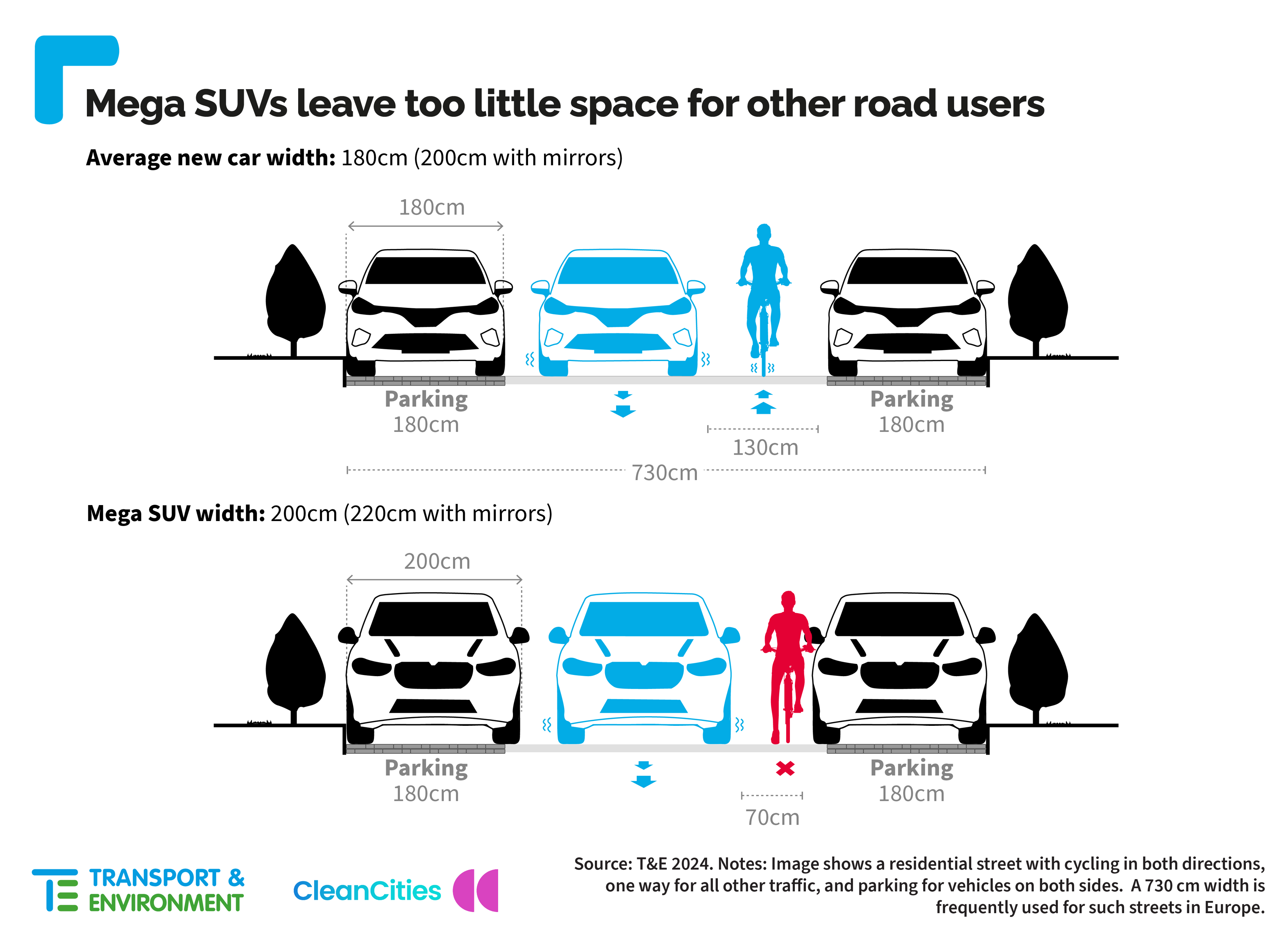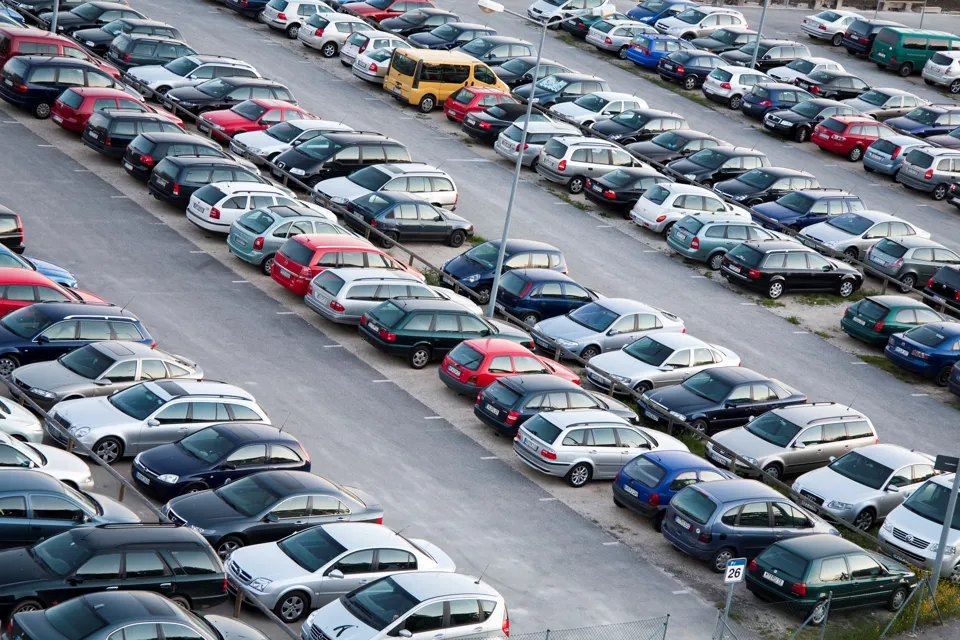The trend in new cars increasing in size is set to continue, according to new research from Transport and Environment (T&E).
New cars, on average, are getting 1 cm wider every two years in Europe, due to the rising sales of SUVs, it says.
The environmental lobby group’s report - Ever-wider: why large SUVs don’t fit, and what to do about it - suggests that around half of new cars sold are already too wide for the minimum on-street parking space in many countries.
Paris could be the first major European capital to tackle this trend if citizens endorse higher parking charges for SUVs in a referendum next month.
Comparing the top 100 cars sold in 2018 to the top 100 in the first-half of 2023, T&E says that the average width of new cars has grown from 177.8cm to 180.3cm over the five-year period.
Data compiled by the International Council on Clean Transportation (ICCT) confirms the same trend in the two decades up to 2020.
New cars in the EU are subject to the same maximum width, 255cm, as buses and trucks.
T&E says that unless the EU width limit for cars is reviewed and cities impose higher parking charges, large SUVs and pick-ups will continue to expand to the cap meant for trucks.

James Nix, vehicles policy manager at T&E, said: “Cars have been getting wider for decades and that trend will continue until we set a stricter limit.
“Currently the law allows new cars to be as wide as trucks. The result has been big SUVs and American style pick-up trucks parking on our footpaths and endangering pedestrians, cyclists and everyone else on the road.”
Among the top 100 models in 2023, 52% of vehicles sold were too wide for the minimum specified on-street parking space (180cm) in major cities, including London, Paris and Rome, the research also finds.
Off-street parking is now a tight squeeze even for the average new car (180cm wide), while large luxury SUVs no longer fit.
Measuring around 200cm wide, large luxury SUVs leave too little space for car occupants to get in and out of vehicles in typical off-street spaces (240cm).
The growth in size is very pronounced among large luxury SUVs. For example, the Land Rover Defender grew by 20.6 cm and the Mercedes X5 by 6 cm in just six years, says T&E.
The wider designs have also enabled the height of vehicles to be further raised, despite crash data showing a 10cm increase in the height of vehicle fronts carries a 30% higher risk of fatalities in collisions with pedestrians and cyclists.





















NigelBoyle - 23/01/2024 11:43
I wish I could upload photos here, I have one of an old Fiat 600 next to a Volvo XC90, it looks like a childs Tonka toy!